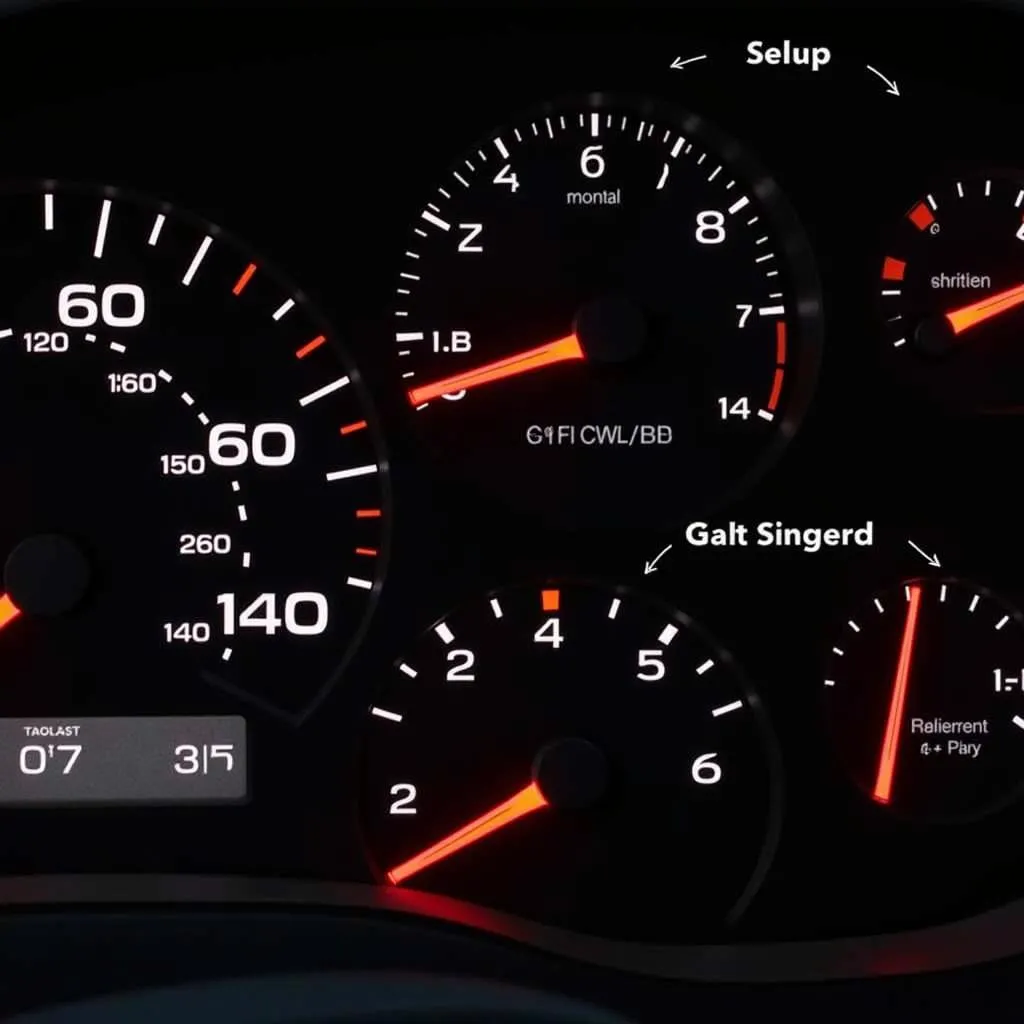Understanding your vehicle’s health is crucial, and modern cars speak a language of sensors and codes. That’s where a scan tool test, also known as an OBD2 scan, becomes your essential translator. This in-depth guide explores the ins and outs of scan tool tests, empowering you to decode your car’s messages and make informed decisions.
What is a “Please Perform the Scan Tool Test” Message?
When your dashboard lights up with a “Check Engine” light or other warning signals, your car is trying to tell you something. The message “please perform the scan tool test” is a direct call to action, urging you to delve deeper into the car’s computer system to diagnose the issue. It means a simple visual inspection won’t suffice, and a more sophisticated approach is required.
Why is a Scan Tool Test Important?
Ignoring this message is like dismissing a doctor’s recommendation for a check-up. Here’s why it’s crucial:
- Accurate Diagnosis: A scan tool test reads Diagnostic Trouble Codes (DTCs) stored in your car’s computer, pinpointing the problem area.
- Cost Savings: Early detection through a scan can help you address minor issues before they escalate into costly repairs.
- Peace of Mind: Understanding what’s wrong with your car eliminates guesswork and empowers you to make confident decisions about repairs.
 Car with Scan Tool Connected to OBD2 Port
Car with Scan Tool Connected to OBD2 Port
How Does a Scan Tool Test Work?
- Locate the OBD2 Port: This standardized port is typically found under the driver’s side dashboard.
- Connect the Scan Tool: Plug the scan tool into the OBD2 port.
- Turn on the Ignition: Turn the key to the “on” position without starting the engine.
- Read the Codes: The scan tool will communicate with your car’s computer and display any stored DTCs.
Deciphering the Codes: What Do They Mean?
Each DTC is a unique code representing a specific issue within your car’s systems.
- P Codes: Refer to powertrain issues (engine, transmission).
- B Codes: Indicate problems with the body (airbags, power windows).
- C Codes: Relate to chassis systems (ABS, traction control).
- U Codes: Point to network communication issues.
 Mechanic Diagnosing Car Problem with Scan Tool
Mechanic Diagnosing Car Problem with Scan Tool
Example:
A P0420 code indicates a problem with the catalytic converter system.
DIY vs. Professional Scan Tool Tests
While DIY scan tools are available, their functionality might be limited. Professional-grade tools offer:
- Advanced Features: More comprehensive data readings, live sensor information, and the ability to reset certain systems.
- Expert Interpretation: Mechanics possess the knowledge and experience to accurately interpret codes and recommend the best course of action.
“Please Perform the Scan Tool Test” – Frequently Asked Questions
- Q: Can I drive my car with the “Check Engine” light on?
- A: While you might be able to drive short distances, it’s crucial to address the issue promptly to prevent further damage.
- Q: How much does a scan tool test cost?
- A: Costs vary depending on location and whether you choose a DIY tool or a professional service.
- Q: Can I reset the “Check Engine” light myself?
- A: While some scan tools offer this feature, it’s generally not recommended unless you fully understand the underlying issue.
 Car Dashboard with Warning Lights Explained
Car Dashboard with Warning Lights Explained
Don’t Ignore the Call: Take Action!
The message “please perform the scan tool test” is your car’s way of asking for help. By heeding this call, you gain valuable insights into your vehicle’s health and can make informed decisions about maintenance and repairs. Whether you opt for a DIY approach or seek professional assistance, remember that addressing the underlying issue is key to keeping your car running smoothly and safely.
Need assistance with a scan tool test or have other car-related questions? Contact our team of experts via WhatsApp: +1(641)206-8880, Email: [email protected], or visit us at 276 Reock St, City of Orange, NJ 07050, United States. We’re here to help 24/7!


